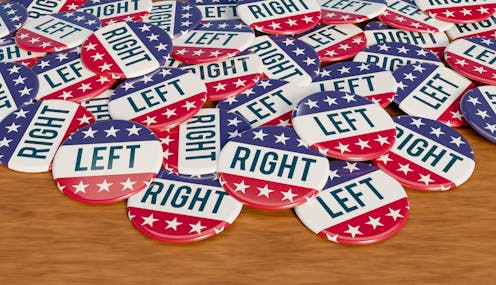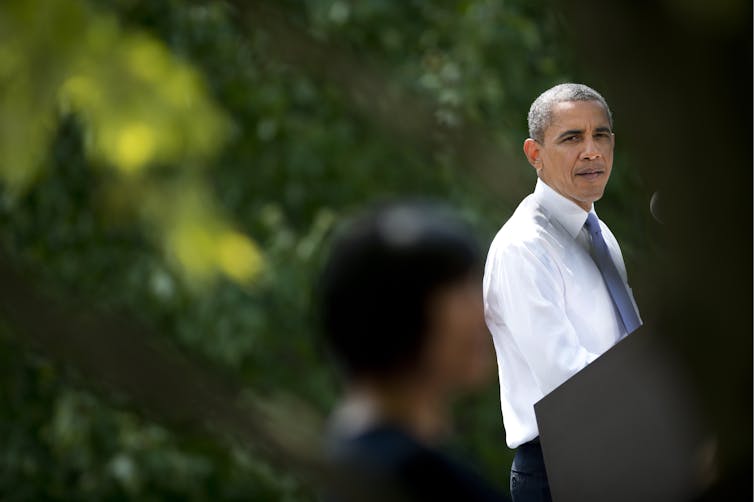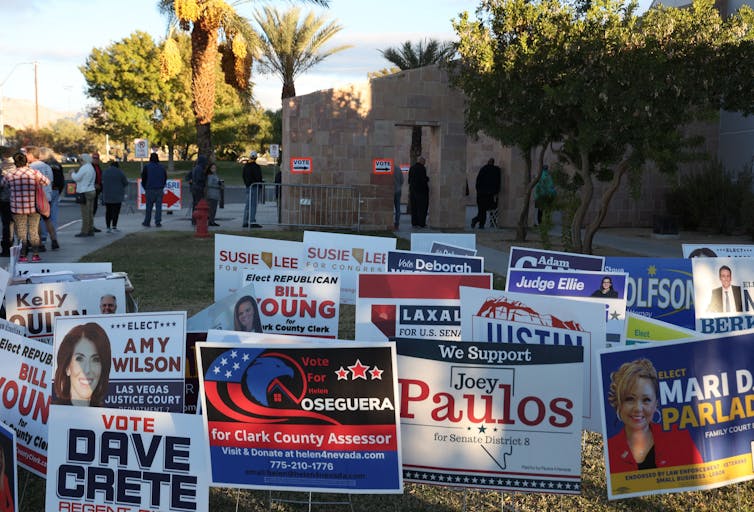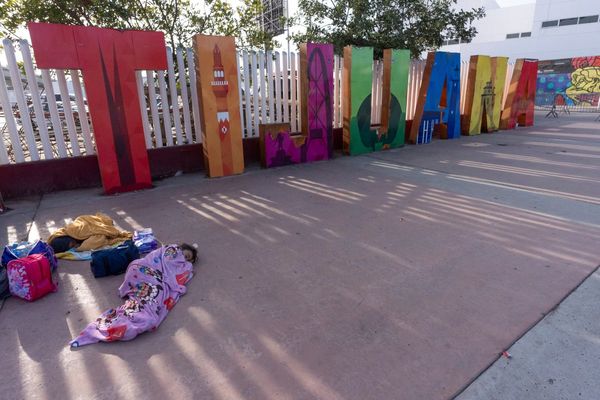
Are Americans really as politically polarized as they seem – and everybody says?
It’s definitely true that Democrats and Republicans increasingly hate and fear one another. But this animosity seems to have more to do with tribal loyalty than liberal-versus-conservative disagreements about policy. Our research into what Americans actually want in terms of policy shows that many have strong political views that can’t really be characterized in terms of “right” or “left.”
The media often talks about the American political landscape as if it were a line. Liberal Democrats are on the left, conservative Republicans on the right, and a small sliver of moderate independents are in the middle. But political scientists like us have long argued that a line is a bad metaphor for how Americans think about politics.
Sometimes scholars and pundits will argue that views on economic issues like taxes and income redistribution, and views on so-called social or cultural issues like abortion and gay marriage, actually represent two distinct dimensions in American political attitudes. Americans, they say, can have liberal views on one dimension but conservative views on the other. So you could have a pro-choice voter who wants lower taxes, or a pro-life voter who wants the government to do more to help the poor.
But even this more sophisticated, two-dimensional picture doesn’t reveal what Americans actually want the government to do – or not do – when it comes to policy.
First, it ignores some of the most contentious topics in American politics today, like affirmative action, the Black Lives Matter movement and attempts to stamp out “wokeness” on college campuses.
Since 2016, when Donald Trump won the presidency while simultaneously stoking racial anxieties and bucking Republican orthodoxy on taxes and same-sex marriage, it has become clear that what Americans think about politics can’t really be understood without knowing what they think about racism, and what – if anything – they want done about it.

Recently, some political scientists have argued that views on racial issues represent a third “dimension” in American politics. But there are other problems with treating political attitudes as a set of “dimensions” in the first place. For example, even a “3D” picture doesn’t allow for the possibility that Americans with conservative economic views tend to also hold conservative racial views, while Americans with liberal economic views are deeply divided on issues related to race.
A new picture of American politics
In our new article in Sociological Inquiry, we analyzed public opinion data from 2004 to 2020 to develop a more nuanced picture of American political attitudes. Our aim was to do a better job of figuring out what Americans actually think about politics, including policies related to race and racism.
Using a new analytic method that doesn’t force us to think in terms of dimensions at all, we found that, over the past two decades, Americans can be broadly divided into five different groups.
In most years, slightly less than half of all Americans had consistently liberal or conservative views on policies related to the economy, morality and race, and thus fall into one of two groups.
“Consistent Conservatives” tend to believe that the free market should be given free rein in the economy, are generally anti-abortion, tend to say that they support “traditional family ties” and oppose most government efforts to address racial disparities. These Americans almost exclusively identify themselves as Republicans.
“Consistent Liberals” strongly support government intervention in the economy, tend to be in favor of abortion rights and pro-same-sex marriage and feel that the government has a responsibility to help address discrimination against Black Americans. They mostly identify as Democrats.
But the majority of Americans, who don’t fall into one of these two groups, are not necessarily “moderates,” as they are often characterized. Many have very strong views on certain issues, but can’t be pigeonholed as being on the left or right in general.
Instead, we find that these Americans can be classified as one of three groups, whose size and relationship to the two major parties change from one election cycle to the next:
“Racial Justice Communitarians” have liberal views on economic issues like taxes and redistribution and moderate or conservative views on moral issues like abortion and same-sex marriage. They also strongly believe that the government has a responsibility to address racial discrimination. This group likely includes many of the Black evangelicals who strongly supported Barack Obama’s presidential campaign, but were also deeply uncomfortable with his expression of support for same-sex marriage in 2012.
“Nativist Communitarians” also have liberal views on economics and conservative views on moral issues, but they are extremely conservative with respect to race and immigration, in some cases even more so than Consistent Conservatives. Picture, for instance, those voters in 2016 who were attracted to both Bernie Sanders’ economic populism and Donald Trump’s attacks on immigrants.
“Libertarians,” who we find became much more prominent after the tea party protests of 2010, are conservative on economic issues, liberal on social issues and have mixed but generally conservative views in regard to racial issues. Think here of Silicon Valley entrepreneurs and venture capitalists who think that the government has no business telling them how to run their company – or telling gay couples that they can’t get married.

Five groups – but only two parties
These three groups of Americans have a difficult time fitting in with either of the two major parties in the U.S.
In every year we looked, the Racial Justice Communitarians – who include the largest percentage of nonwhite Americans – were most likely to identify as Democrats. But in some years up to 40% still thought of themselves as Republicans or independents.
Nativist Communitarians and Libertarians are even harder to pin down. During the Obama years they were actually slightly more likely to be Democrats than Republicans. But since Trump’s rise in 2016, both groups are now slightly more likely to identify as Republicans, although large percentages of each group describe themselves as independents or Democrats.
Seeing Americans as divided into these five groups – as opposed to polarized between the left and right – shows that both political parties are competing for coalitions of voters with different combinations of views.
Many Racial Justice Communitarians disagree with the Democratic Party when it comes to cultural and social issues. But the party probably can’t win national elections without their votes. And, unless they are willing to make a strong push for promoting “racial justice,” the Republican Party’s national electoral prospects probably depend on attracting significant support from either the economically liberal Nativist Communitarians or the socially liberal Libertarians.
But perhaps most importantly, these five groups show how diverse Americans’ political attitudes really are. Just because American democracy is a two-party system doesn’t mean that there are only two kinds of American voters.
The authors do not work for, consult, own shares in or receive funding from any company or organization that would benefit from this article, and have disclosed no relevant affiliations beyond their academic appointment.
This article was originally published on The Conversation. Read the original article.







